29 best early spring flowers and blossoms
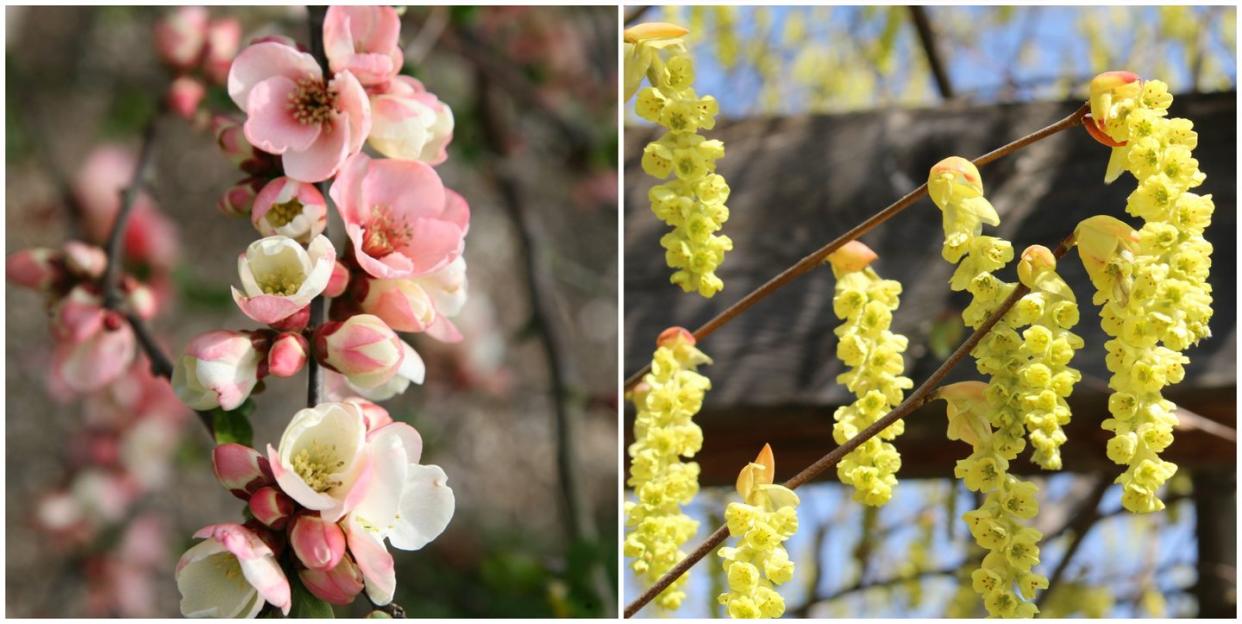
Spring flowers, plants and shrubs bring joy to everyone after the greyness of winter. Here, we look at the best breathtakingly beautiful but all too brief early spring flowers, including blossom. We also recommend the best spring shrubs and the best spring flowers and plants for when the season is in full swing, including cherry blossom, apple blossom, clematis and daphne.
There’s always one particular day when you can first smell the scent of spring growth in the air. Breathe it in deeply and capitalise on the energy it gives you: get out there and start primping and pruning, enjoying the thought of what the coming seasons will bring. Buy some ready-potted spring flowers, like grape hyacinths or dwarf narcissi to have by your front door – they’re fuss-free and can be planted out once flowers have faded.
Make the most of mild days by doing a spot of weeding – at the very least, whip off any emerging seed heads to keep ahead of the onslaught.
If putting in new spring plants, choose ones that will naturally thrive in your garden’s particular conditions, be that shade or sun, and make this the year you grow some hardy annuals from seed – it is rewarding and cost effective.
Capitalise, too, on the use of pots and tubs. Seed companies produce mini veg varieties that can be grown easily in containers, and there are dwarf trees and shrubs that will provide you with potted colour.
Most of all, gear your garden around tasks you enjoy and plan out some areas that will largely look after themselves with minimal input from you. Gardening, like life, shouldn’t be viewed as an endless ‘To Do’ list – it is something to be savoured.
BEST EARLY SPRING FLOWERS AND PLANTS
1. Japanese quince – Apple blossom
Chaenomeles speciosa ‘Moerloosei’, a cultivar of the Japanese quince, is also known as C. ‘Apple Blossom’ because of its remarkable resemblance to its namesake. It is equally happy growing in full sun or partial shade in most soils and, left to its own devices, will grow into a thorny tangle of branches. If pruned back after flowering, it can be trained into a neat shrub or makes an excellent wall shrub or hedge. The fruit can be used to make jelly.

2. Weeping cherry – Cherry blossom
Prunus x subhirtella ‘Pendula Rubra’ is an elegant dwarf weeping cherry, ideal for small gardens and container growing, reaching three metres in height and spread over 20 years. The carmine pink flowers are borne in profusion in March and April and are much loved by pollinators. Grow in full sun and in any soil other than shallow chalk. Pruning, where necessary, should only be done in summer to avoid silver leaf infection.
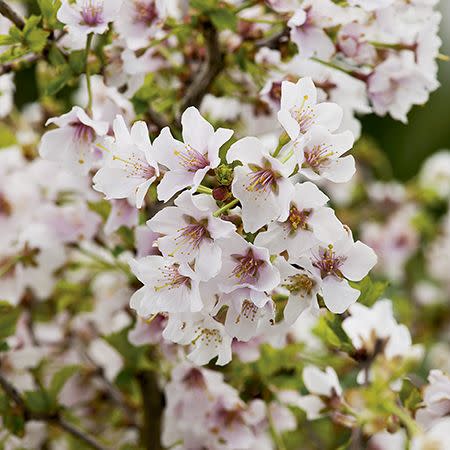
3. Evergreen daphne
Daphne bholua ‘Peter Smithers’ – with its stop-you-in-your-tracks piercing citrusy fragrance – is a daphne cultivar to grow close to the house, or next to the path leading to a door so that you can revel in its scent as often as possible. The flowers open from very dark buds to white flushed with red-purple and will be alive with the hum of bees. Best planted in spring in sun or partial shade and in humus-rich soil.

4. Nepal clematis
Clematis napaulensis is a climber that carries clusters of delicately fragrant, pale green bell-like flowers with dangling purple stamens. It all but disappears in summer, then returns to life in the autumn with lush new foliage, followed in November by flowers that bloom right through until March. Plant it deeply in a sheltered position in full sun or partial shade and in fertile soil. To disguise and support its stems when it is summer dormant, it can be grown alongside a deciduous climber.
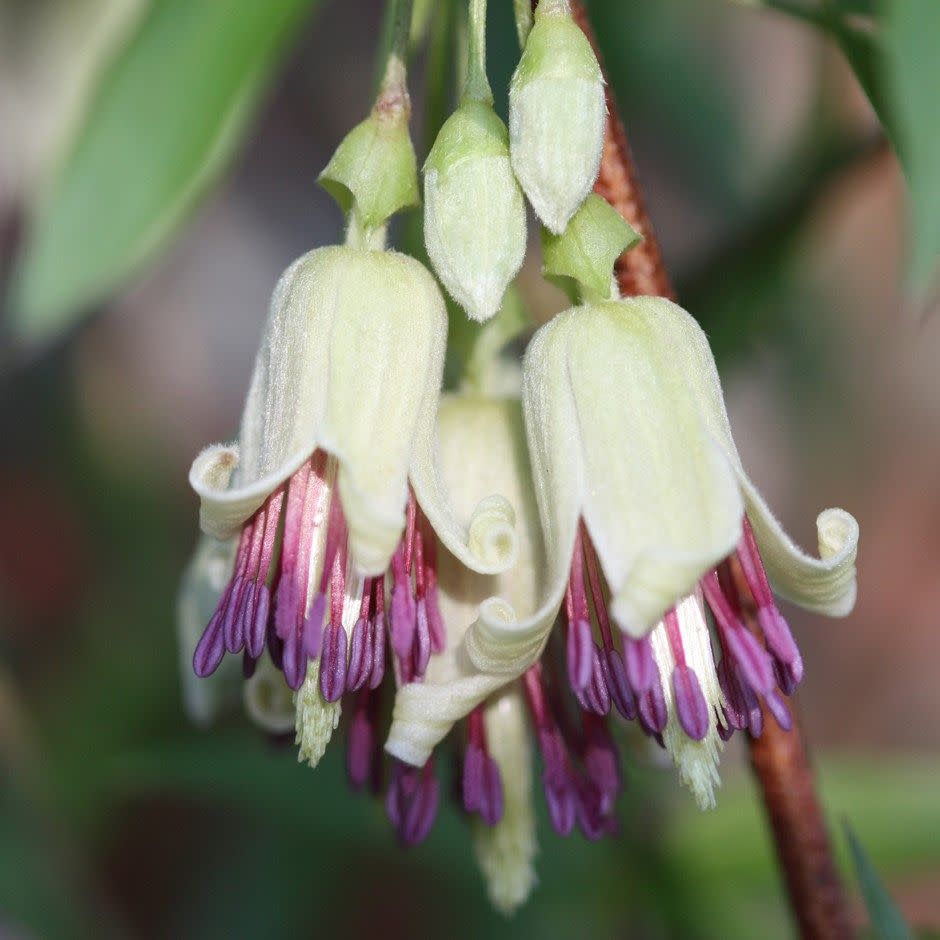
5. Edgeworthia
Edgeworthia chrysantha ‘Grandiflora’ is a real eye-catcher. Shimmering silky white buds are carried on bare stems and open to reveal clusters of fragrant deep primrose-yellow flowers. A relative of the daphne, its scent is variously described as clove, honey and gardenia. This deciduous shrub is best planted in humus-rich soil in a sheltered corner or in a woodland garden to prevent the flowers being damaged by frost.
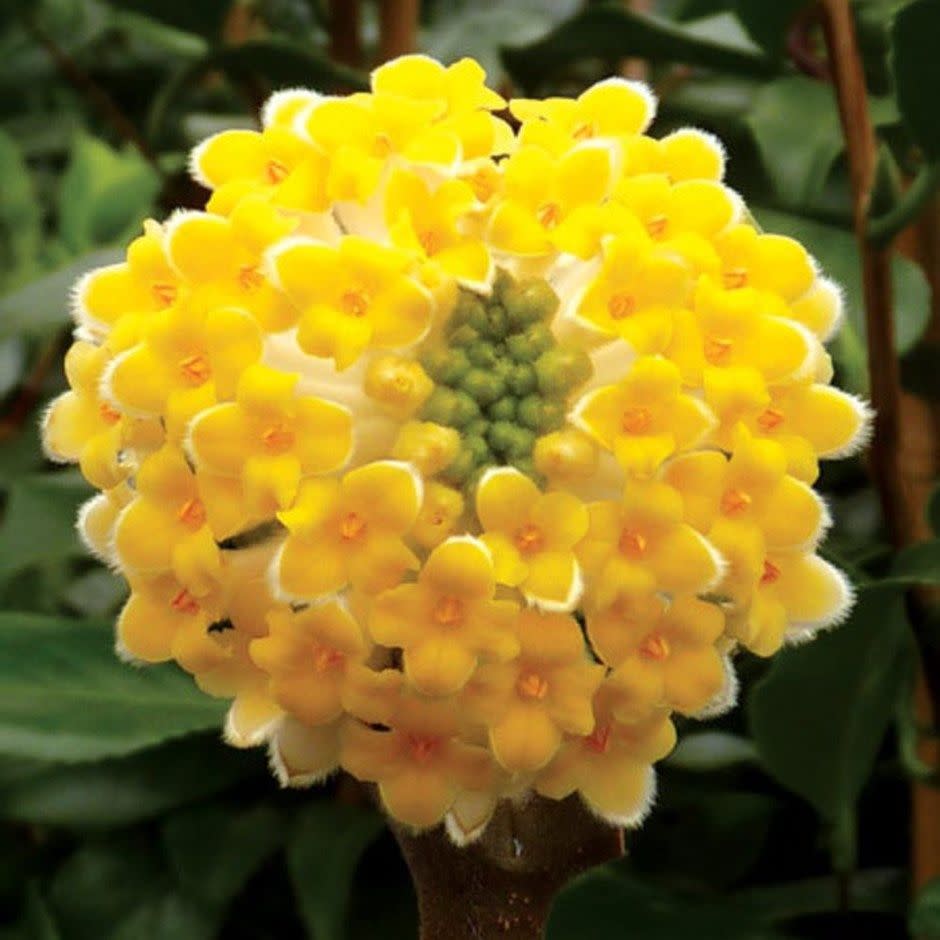
6. Chinese winter hazel
Corylopsis sinensis var. sinensis – also known as Chinese winter hazel – grows into a large open shrub and is a relative of the witch hazel. Numerous catkin-like racemes of fragrant yellow bell flowers are carried on the bare stems in early spring. It does well in a woodland setting where the flowers are protected from frost and prefers well-drained acid soil. Prune after flowering.

7. Cherry ‘Kojo-no-mai’ – Cherry blossom
Prunus incisa ‘Kojo-no-mai’ is a charming miniature Japanese cherry whose name translates as ‘flight of the butterflies’ and it is indeed an entrancing sight when its bare zigzag stems are smothered in palest pink flowers. It is ideal for container growing or for a small garden, as it seldom grows more than two metres tall. ‘Kojo-no-mai’ will grow well anywhere other than shady north-facing spots – and in most soils. Use soil-based compost for container-grown specimens.
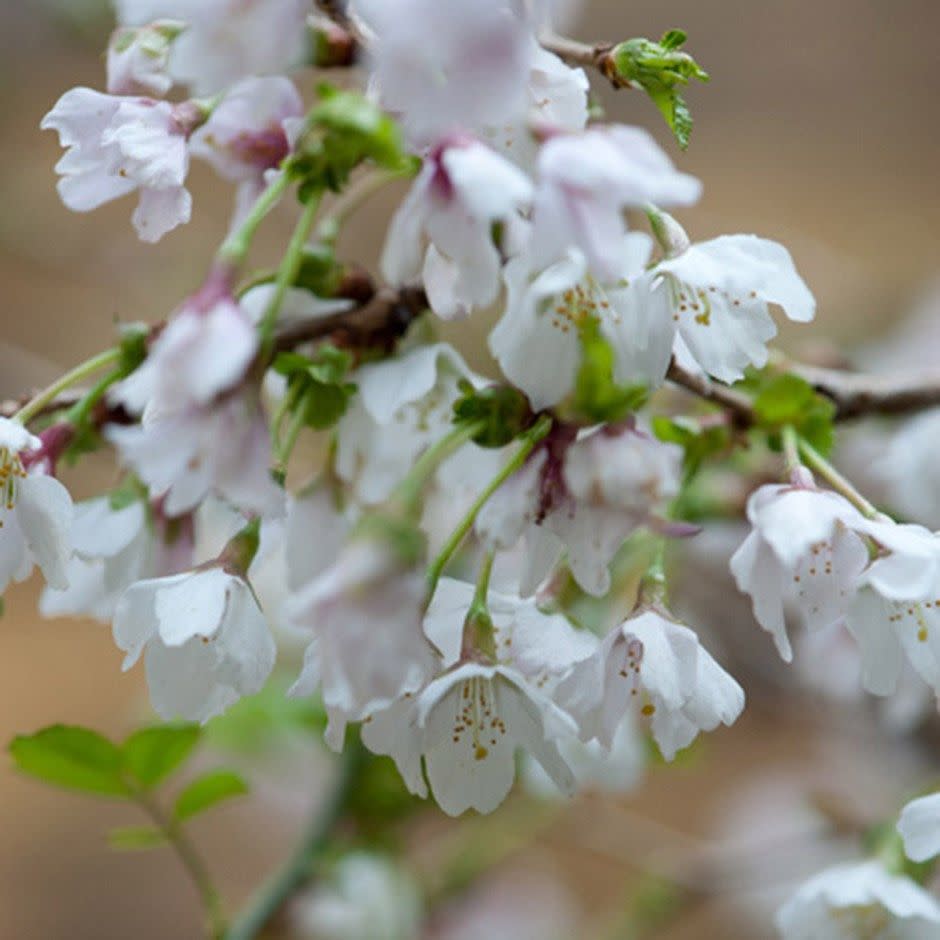
8. Early stachyurus
In early spring, a profusion of tiny pale-primrose bells dangle from the branches of Stachyurus praecox like strings of pearls. The bumblebees love them. A shrub with an open spreading habit, it needs space to be seen at its best. Prune it right back immediately after flowering to encourage the new growth that will carry next year’s flowers. It will then settle into a background role for the summer. It does best in neutral to acidic humus-rich soil in either sun or partial shade.
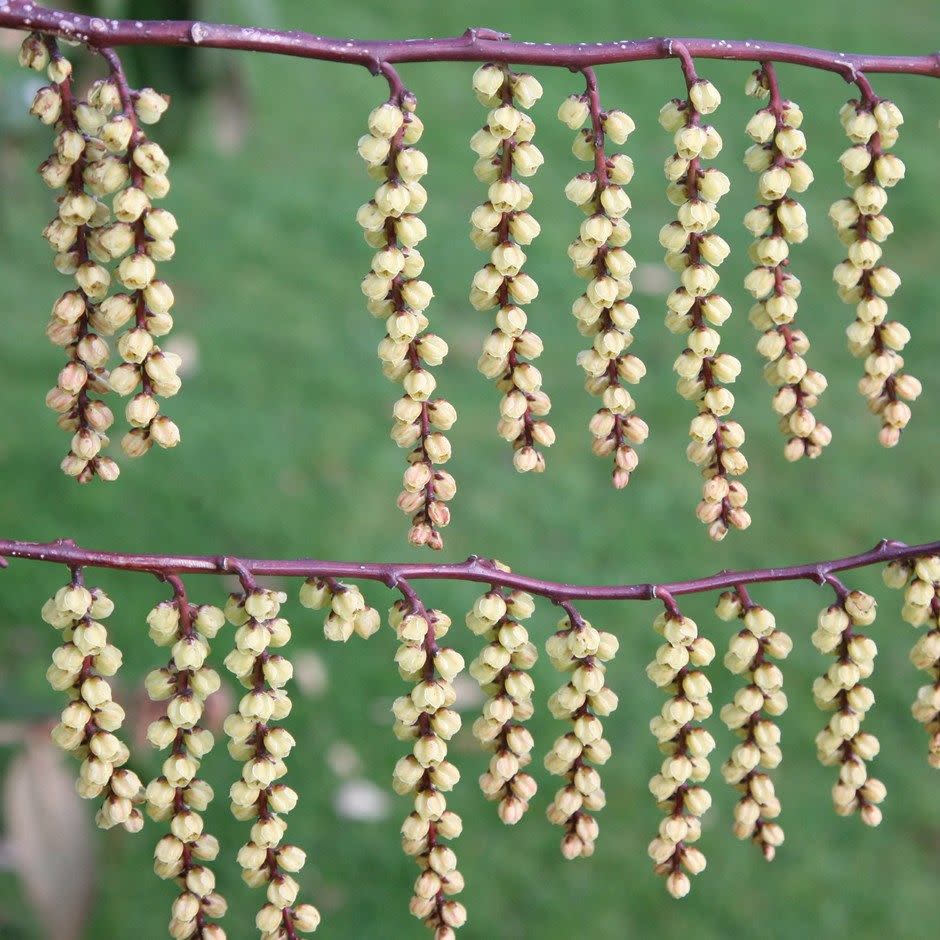
9. Japanese apricot
Prunus mume ‘Beni-chidori’ – also known as the Japanese apricot – is a dwarf tree much loved for its carmine pink, almond-scented flowers that cover the branches from late February and on through March. It is a compact tree, growing to two and a half metres, and is therefore suitable for container planting. It needs full sun and a sheltered position, and will grow in most soils except anything too damp or chalky. Although the occasional fruits are edible, they are not palatable.
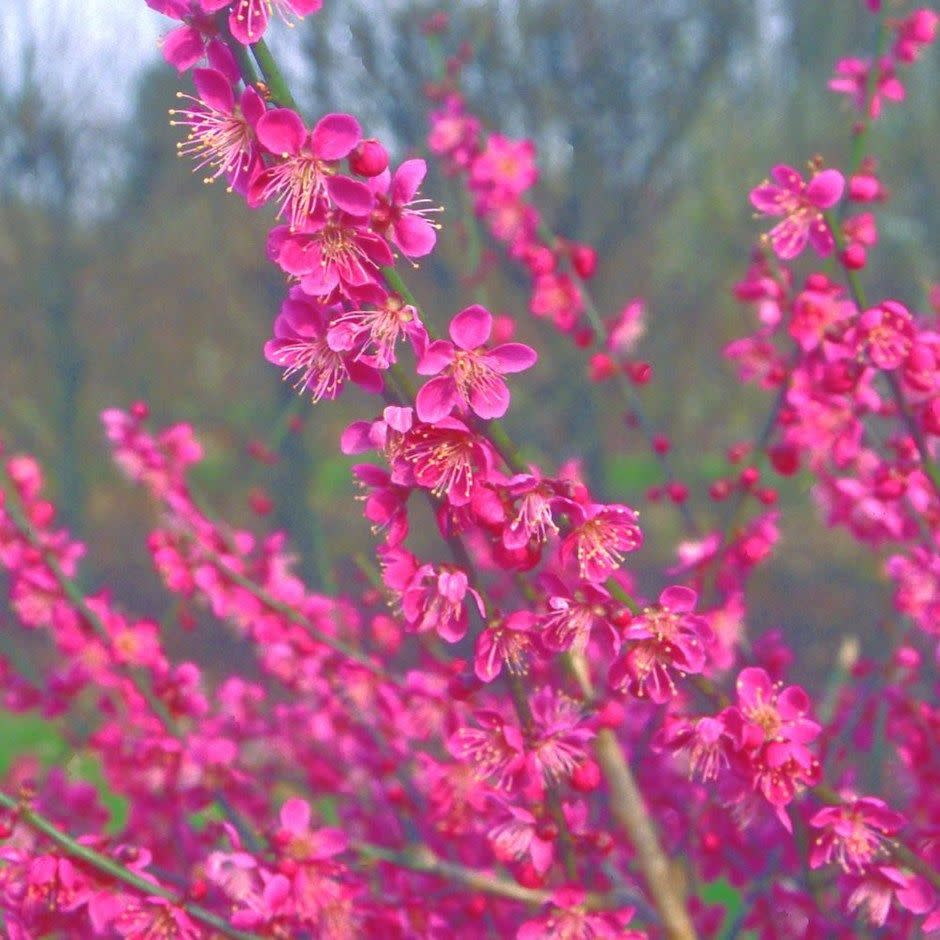
10. White forsythia
Abeliophyllum distichum – better known as the white forsythia – is an altogether subtler shrub than its bright yellow relative. The fragrant star-shaped white flowers are borne in abundance on the bare branches in late winter and early spring. It has quite a lax, scrambling habit and should be cut back after flowering. It prefers full sun but will grow in partial shade and in most soils provided they are not too dry.

11. Delavay osmanthus
This large, spreading and slow-growing evergreen shrub bears masses of scented white flowers in April. It is unfussy, does well in shade and is reliable even on thin, chalky soils. It can be grown as a hedge or cloud pruned but in that case it should be cut in June to ensure future flowers. If you are planting particularly for fragrance, you may prefer its offspring, the honey and vanilla- scented O. x burkwoodii rather than O. delavayi, which some say smells of suntan lotion!
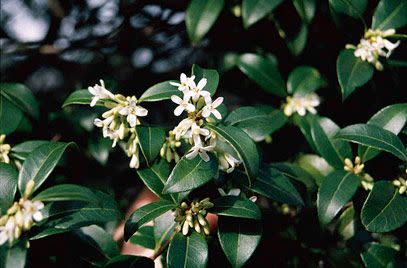
12. Coronilla valentina
A neat evergreen shrub with blue-green foliage, Coronilla valentina var. glauca ‘Citrina’ is covered in scented flowers from February until April – and sometimes again in the autumn. The pea-like lemon- yellow flowers have an attractive fruity fragrance. As it isn’t the hardiest of plants, it is one for milder areas and sheltered spots in full sun, but will grow in any soil provided it is free-draining.

BUY NOW
BEST SPRING SHRUBS
13. Chinese snowball
The white flowers of Viburnum macrocephalum create real impact at the back of a border. BUY NOW
14. Lilac
Choose a repeat-flowering dwarf variety such as Syringa meyeri Flowerfesta Purple for its sweet scent. BUY NOW
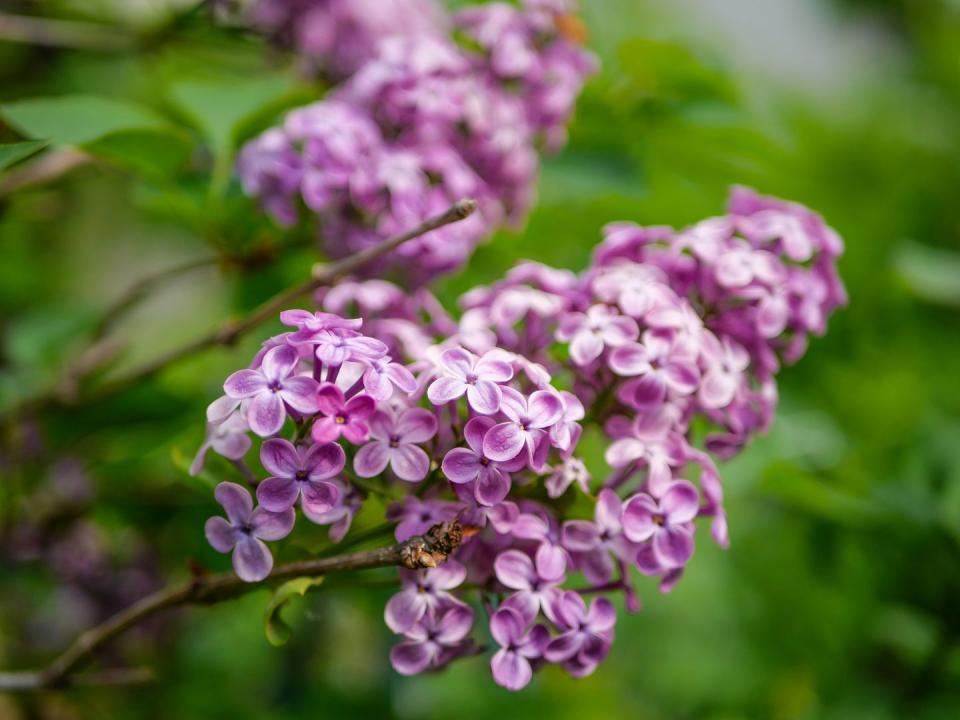
15. Japanese quince
Upright growth and pure white flowers make Chaenomeles speciosa ‘Nivalis’ a pretty choice. BUY NOW
16. Osmanthus
Osmanthus x burkwoodii – glossy, evergreen leaves, plus jasmine-like white flowers. BUY NOW
17. Pearlbush
Exochorda x macrantha ‘The Bride’ has a profusion of confetti-like white flowers on arching stems. BUY NOW
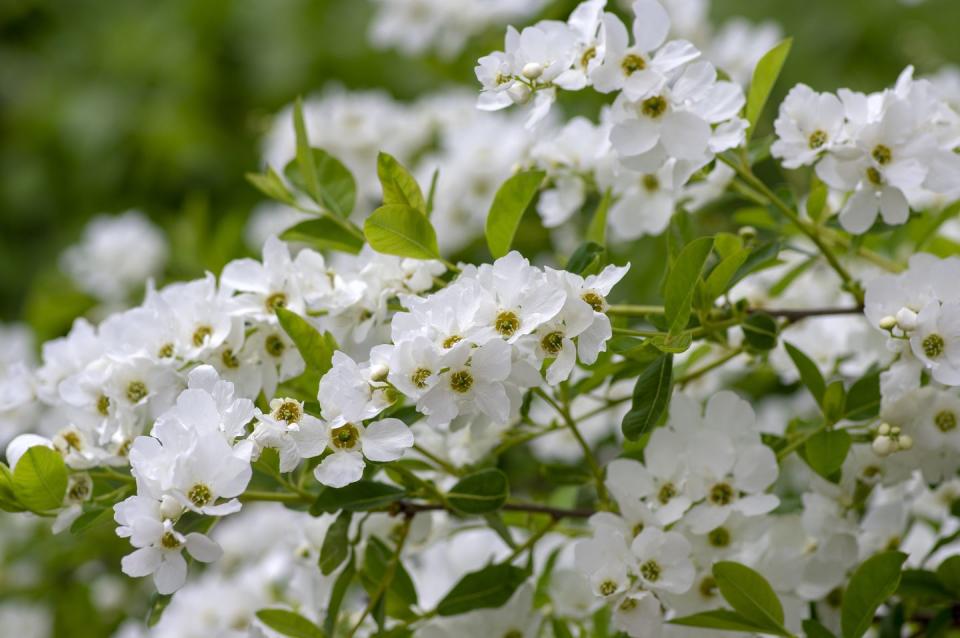
BEST FULL SPRING PLANTS
18. Narcissus ‘Toto’
This little star has a pale yellow trumpet that fades to milky-white – dainty, elegant and good for naturalising in grass or borders. BUY NOW
19. Burkwood viburnum
Plant semi-evergreen shrub Viburnum x burkwoodii by a path to enjoy its highly fragrant white flowers that open in clusters from pink buds in mid and late spring. BUY NOW
20. Crab apple
Malus ‘Evereste’ is a must-have tree smothered by white spring blossom, followed by a second show of orange-yellow fruits in autumn. It is an excellent choice for smaller gardens. BUY NOW
21. Dog’s tooth violet
Erythronium ‘Pagoda’ has exotic-looking sulphur-yellow flowers and glossy green leaves. It will form clumps in time in partial shade. BUY NOW
22. Tulip ‘Gavota’
This lovely tulip has stand-out markings of mahogany-red against a strong creamy-yellow edge.BUY NOW
23. Astrantia ‘Roma’
This puts on a show of pretty pink tiny pincushion flowers from June to September, and it has clump-forming foliage that helps to smother weeds. BUY NOW
24. Ribes sanguineum (flowering currant)
Still quite rare, Ribes sanguineum ‘Elkington’s White’ is worth seeking out for its fresh green foliage and clusters of showy white spring flowers, which are followed by blue-black fruits.
25. Tulipa sprengeri
A cheerful and rewarding little species tulip from Turkey that thrives in cool, damp, humus-rich soil and slowly spreads once happy.
26. Balm-leaved red dead nettle
Lamium orvala is a nettle, but it has no sting and forms a healthy clump with purple-pink flowers. BUY NOW
27. Epimedium
Every garden should feature the ground-hugging heart-shaped leaves and spurred flowers of epimediums. They are generally hardy and enjoy a spot of dappled shade and well-drained soil. BUY NOW
28. Allium ‘Gladiator’
There are lots of alliums to choose from – this reliable one will give you large lavender-purple pompoms on strong upright stems. BUY NOW
29. Shuttlecock fern
Unfurling fern fronds are a spring favourite and attractive Matteuccia struthiopteris won’t disappoint. BUY NOW
Looking for some positivity? get Country Living magazine posted through your letterbox every month. SUBSCRIBE NOW
Like this article? Sign up to our newsletter to get more articles like this delivered straight to your inbox.
You Might Also Like


